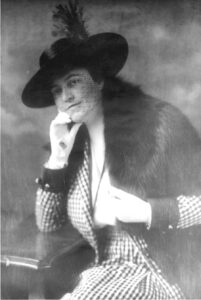In November of 1896, the Coles family home on Letcher Avenue in Lexington, Virginia was thrown into chaos as a 21-year-old woman, renowned for her natural beauty, cried out in agony. A sewing needle had become lodged in her toe. The force of her step broke the needle, and its sharp point penetrated deep into her flesh.
A doctor rushed to the woman’s aid as fast as his horse could carry him. He attempted to locate and remove the needle from his patient’s foot but was not successful. Undeterred, the doctor enlisted help from a local scientist, Sydney Turner Moreland, who agreed to assist in the treatment of his new patient, Elizabeth Carter Coles, the soon-to-be wife of George C. Marshall.
By this time, Sydney Moreland had become an important figure in Lexington. He was one of the last living students to have attended Washington & Lee University under the presidency of Robert E. Lee and served not only as the college’s professor of natural philosophy but also as dean. Students under Moreland studied physics and the science of nature, a field that achieved significant discoveries with advancements in 19th-century technology. Moreland utilized inventions such as electricity, vacuum chambers, and X-rays inside Washington & Lee’s physics lab.
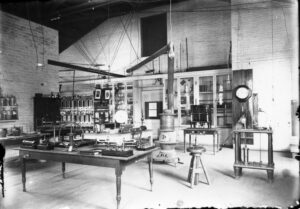
The Physics Laboratory at Washington & Lee University. c.1900. Courtesy Washington & Lee University Special Collections & Archives.
Ms. Coles likely survived her needle injury thanks to the recent invention of the X-ray by Wilhelm Conrad Röntgen, just one year prior. Nikola Tesla helped Röntgen and his invention permeate the medical field with images of the human body, which Tesla called shadowgraphs. The most famous of these shadowgraphs coincidentally depicts a foot wearing a shoe.
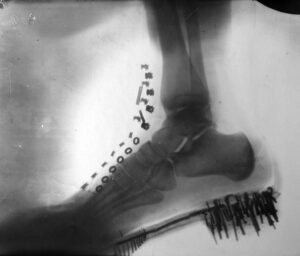
X-ray image of a human foot in a shoe obtained by Nikola Tesla in 1896. Courtesy Nikola Tesla Museum.
Professor Moreland pioneered early X-ray technology and was one of the first to experiment with this invention in the South. Elizabeth Coles may have been the first woman X-rayed in Virginia, if not the United States when her foot sat under Moreland’s single focus tube X-ray machine for nine minutes to capture the below image. The needle, sitting precariously near a bone in her middle toe, can easily be seen.
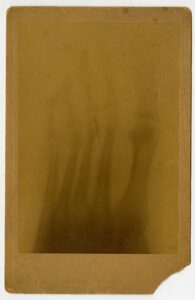
Photo 4: X-ray image of the left foot of Elizabeth Coles, photographed in November 1896. Courtesy Washington & Lee University Special Collections & Archives.
Half a century after Professor Moreland captured this image and saved Ms. Coles’ life, his son, Dr. Edward L. Moreland, donated the image to Washington & Lee University. Dr. Moreland had become an accomplished scientist in his own right, serving as executive vice president of the Massachusetts Institute of Technology and executive officer of the National Defense Research Committee during the Second World War. President Harry Truman awarded Dr. Moreland the Presidential Medal of Freedom in 1948 for his exceptional service.
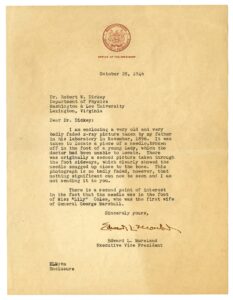
Letter from Dr. Edward L. Moreland accompanying Elizabeth Coles’ X-ray to Dr. Robert W. Dickey of Washington & Lee University’s Physics Department. October 28, 1946. Courtesy Washington & Lee University Special Collections & Archives.
Special thanks to the Washington & Lee University Special Collections & Archives Department for sharing their discovery of this X-ray image and accompanying materials with the George C. Marshall Foundation.
Cody Youngblood is an architectural historian and the Curator at Patrick Henry’s Red Hill. He has been studying George Marshall since he was a teenager and considers him a hero. Youngblood holds an M.A. in the Conservation of Historic Buildings from the University of York and has formerly served as Museum Director of Marshall’s home, Dodona Manor, in Leesburg, Virginia. At Red Hill, Cody stewards the country’s largest collection of Patrick Henry artifacts, but still finds time to travel. You can follow his adventures on Instagram @young_preservationist.

